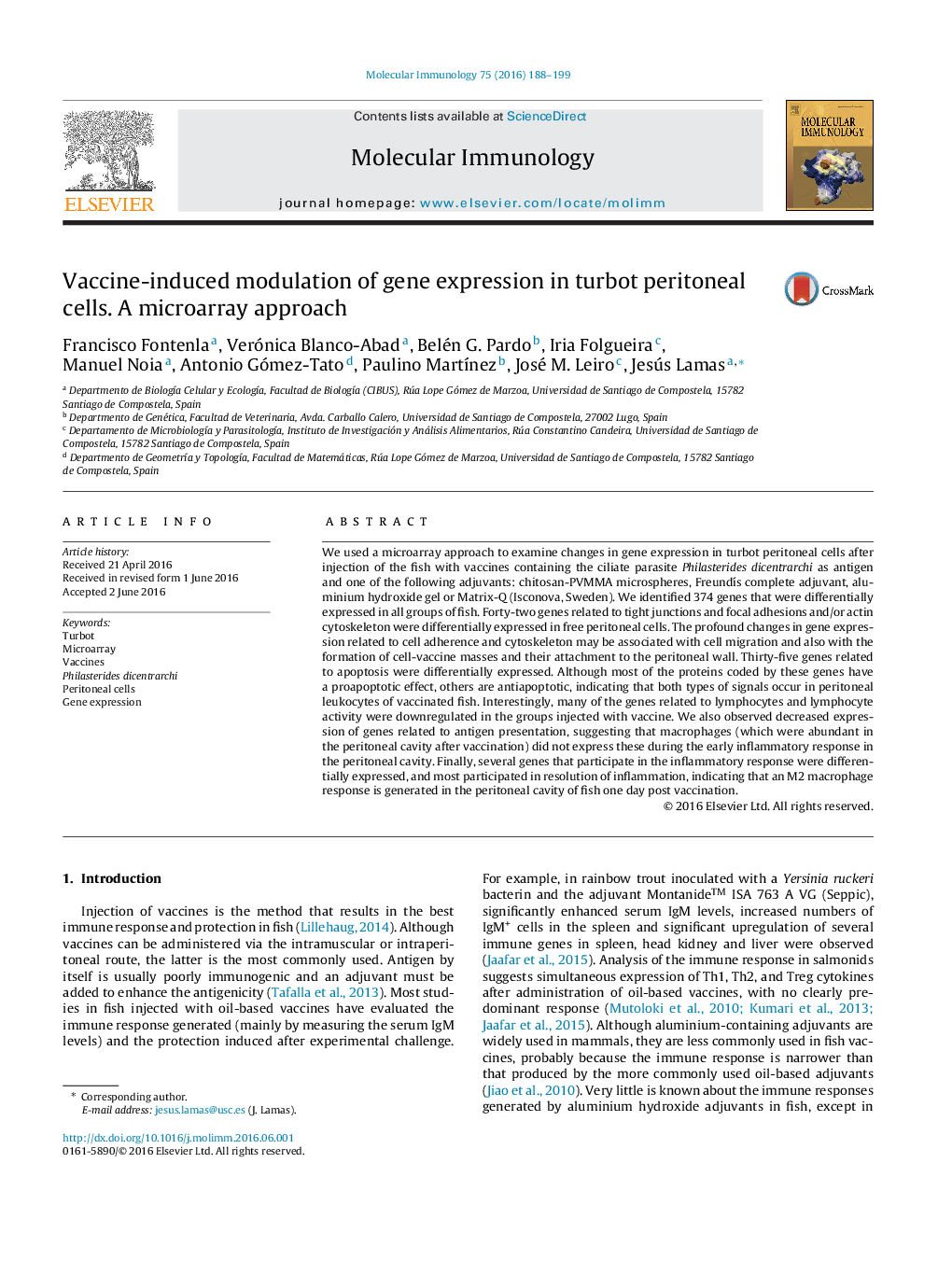| Article ID | Journal | Published Year | Pages | File Type |
|---|---|---|---|---|
| 5916374 | Molecular Immunology | 2016 | 12 Pages |
Abstract
We used a microarray approach to examine changes in gene expression in turbot peritoneal cells after injection of the fish with vaccines containing the ciliate parasite Philasterides dicentrarchi as antigen and one of the following adjuvants: chitosan-PVMMA microspheres, FreundÌs complete adjuvant, aluminium hydroxide gel or Matrix-Q (Isconova, Sweden). We identified 374 genes that were differentially expressed in all groups of fish. Forty-two genes related to tight junctions and focal adhesions and/or actin cytoskeleton were differentially expressed in free peritoneal cells. The profound changes in gene expression related to cell adherence and cytoskeleton may be associated with cell migration and also with the formation of cell-vaccine masses and their attachment to the peritoneal wall. Thirty-five genes related to apoptosis were differentially expressed. Although most of the proteins coded by these genes have a proapoptotic effect, others are antiapoptotic, indicating that both types of signals occur in peritoneal leukocytes of vaccinated fish. Interestingly, many of the genes related to lymphocytes and lymphocyte activity were downregulated in the groups injected with vaccine. We also observed decreased expression of genes related to antigen presentation, suggesting that macrophages (which were abundant in the peritoneal cavity after vaccination) did not express these during the early inflammatory response in the peritoneal cavity. Finally, several genes that participate in the inflammatory response were differentially expressed, and most participated in resolution of inflammation, indicating that an M2 macrophage response is generated in the peritoneal cavity of fish one day post vaccination.
Related Topics
Life Sciences
Biochemistry, Genetics and Molecular Biology
Molecular Biology
Authors
Francisco Fontenla, Verónica Blanco-Abad, Belén G. Pardo, Iria Folgueira, Manuel Noia, Antonio Gómez-Tato, Paulino MartÃnez, José M. Leiro, Jesús Lamas,
